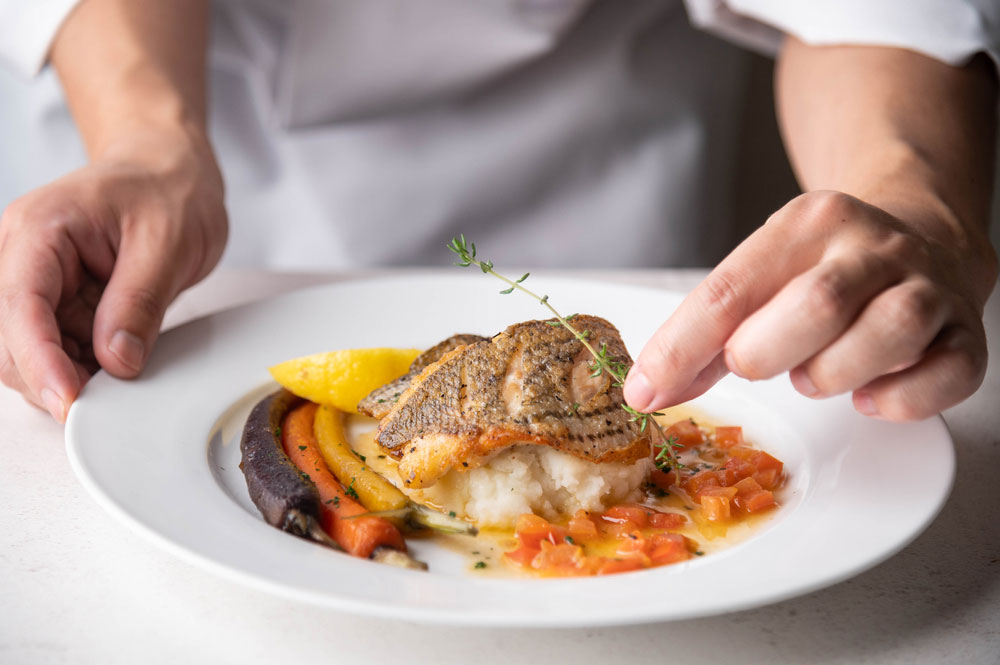French cuisine is celebrated worldwide for its exquisite flavors, meticulous preparation, and deep-rooted traditions. From buttery croissants to sumptuous coq au vin, traditional French food is a culinary journey that captivates the senses and leaves a lasting impression. Traditional French Food, in this exploration of French gastronomy, we’ll delve into the iconic dishes, regional specialties, and cultural significance that make French food an integral part of the country’s heritage.
The Art of French Cooking
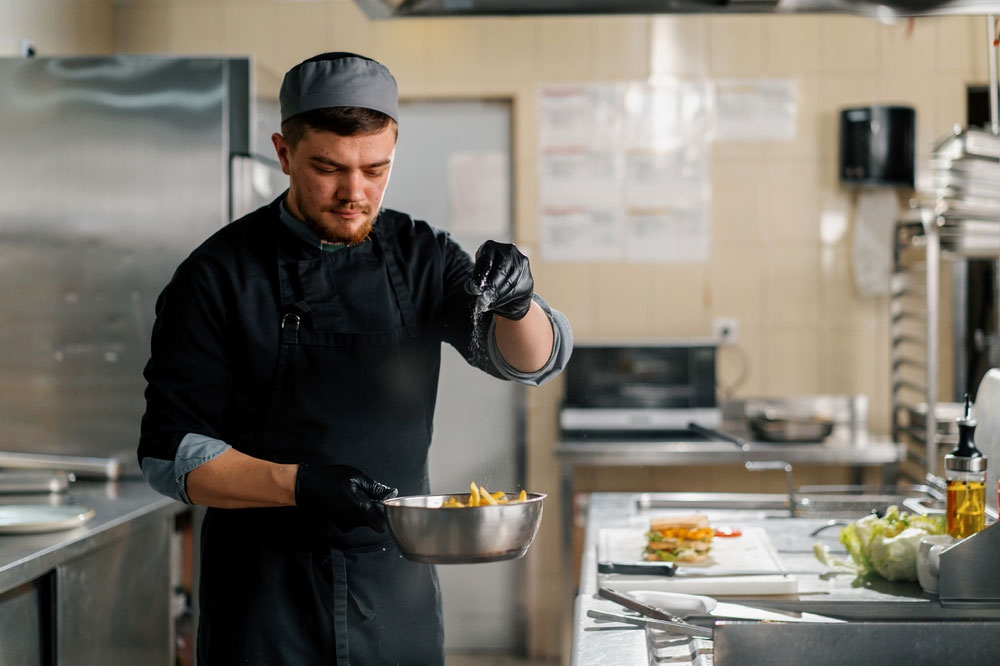
The Art of French Cooking
Culinary Mastery
In France , French cooking is renowned for its meticulous techniques and attention to detail. It’s a culinary tradition that places a premium on mastering the basics of cooking before experimenting with innovation. French chefs undergo rigorous training, learning the art of knife skills, sauce preparation, and the importance of timing in cooking. check our guide BEST CITIES TO VISIT IN FRANCE BESIDES PARIS and plan for your journey.
The Importance of Fresh Ingredients
One of the cornerstones of French cuisine is the use of fresh, high-quality ingredients. From farm-fresh produce to locally sourced meats, French chefs prioritize the use of seasonal ingredients to enhance the flavor of their dishes. The emphasis on freshness ensures that each bite is a burst of natural goodness.
The Role of Technique
French cooking is all about technique. Whether it’s the precise julienne cut of vegetables, the artful reduction of a sauce, or the delicate art of pastry-making, mastering the technique is fundamental to creating authentic French dishes. The dedication to craftsmanship is what sets French cuisine apart.
French Breakfast Delights
Croissants and Pain au Chocolat
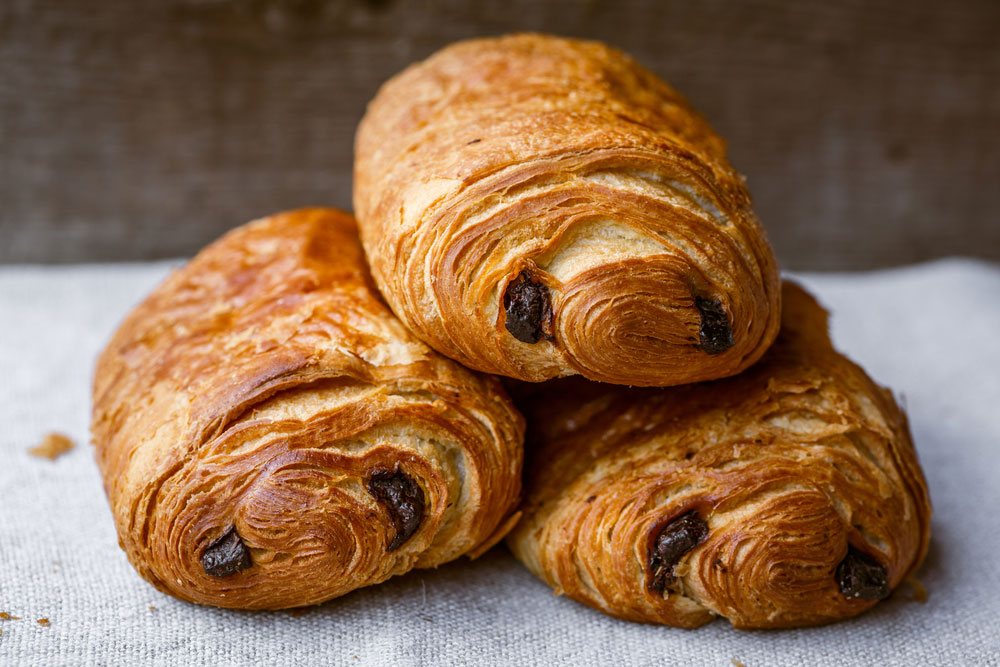
Croissants and Pain au Chocolat
French breakfasts often start with a simple yet irresistible combination of buttery croissants or flaky pain au chocolat (chocolate croissants) paired with a hot cup of coffee. These pastries, known for their light, airy texture and layers of buttery goodness, are a testament to French pastry expertise. See our guide BEST PLACES TO VISIT IN FRANCE OUTSIDE OF PARIS for a quick guidance for planning.
Crêpes with Various Fillings
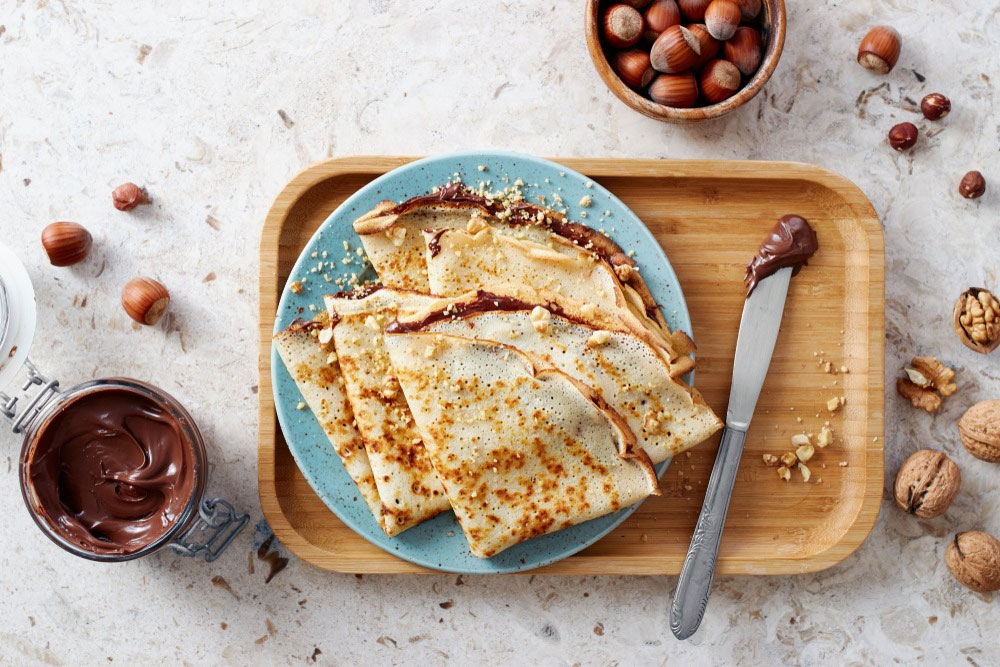
Crêpes with Nutella
Crêpes, thin pancakes that can be filled with a variety of sweet or savory ingredients, are a breakfast favorite. Whether you prefer Nutella and strawberries for a sweet start to your day or ham and cheese for a heartier option, crêpes are a versatile delight. Don’t miss our guide of COOL PLACES IN FRANCE TO VISIT the and plan your trip with us.
Café au Lait and Espresso
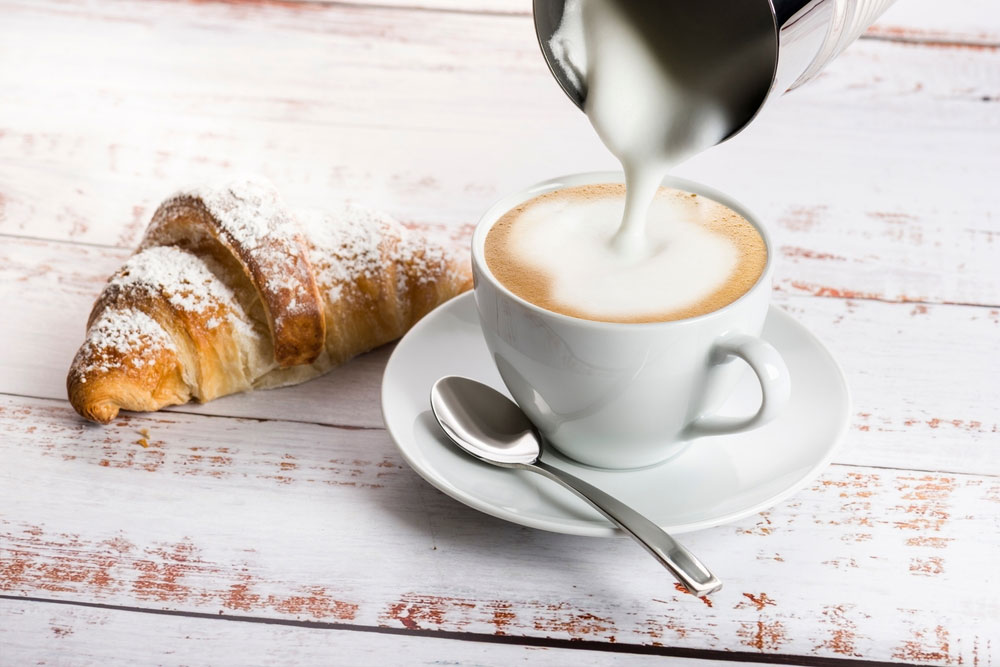
Café au Lait and Espresso
Coffee is an integral part of French breakfast culture. A café au lait, made with equal parts brewed coffee and steamed milk, is a comforting choice. For those seeking a stronger kick, an espresso delivers a concentrated burst of flavor, often served after a meal.
French breakfasts are a leisurely affair, allowing you to savor each bite and sip while appreciating the simplicity and elegance of the meal. They set the tone for a day of culinary exploration in France.
Classic French Appetizers
Escargot: A Unique Delicacy
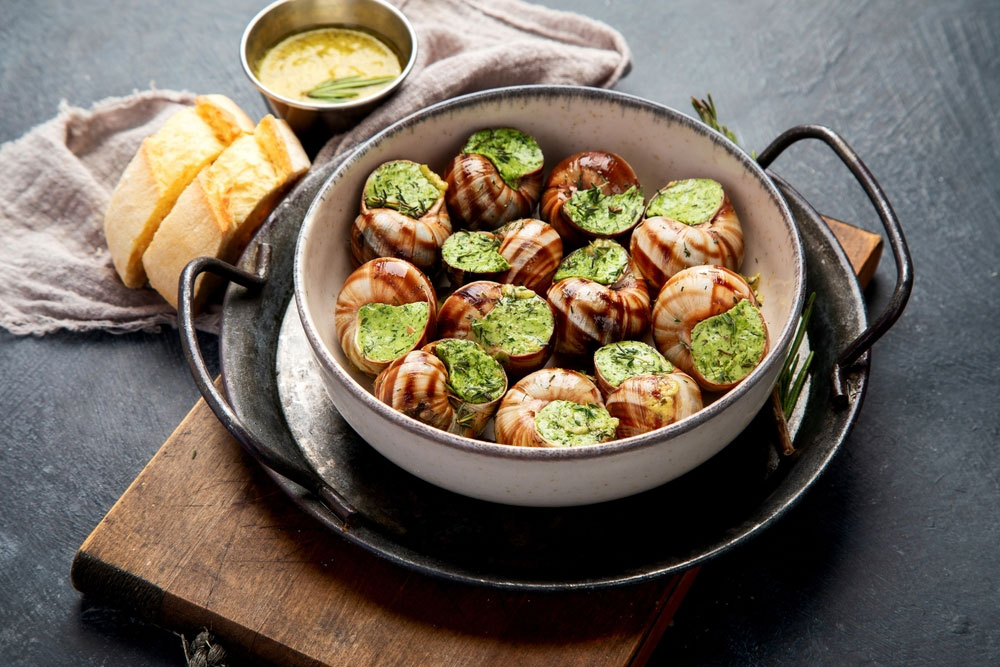
Escargot: A Unique Delicacy
Escargot, or snails, are a classic French delicacy often prepared with garlic, parsley, and butter. Served in their shells, these tender morsels are an exquisite introduction to the world of French cuisine, known for their rich, earthy flavor.
Quiche Lorraine: A Savory Pie
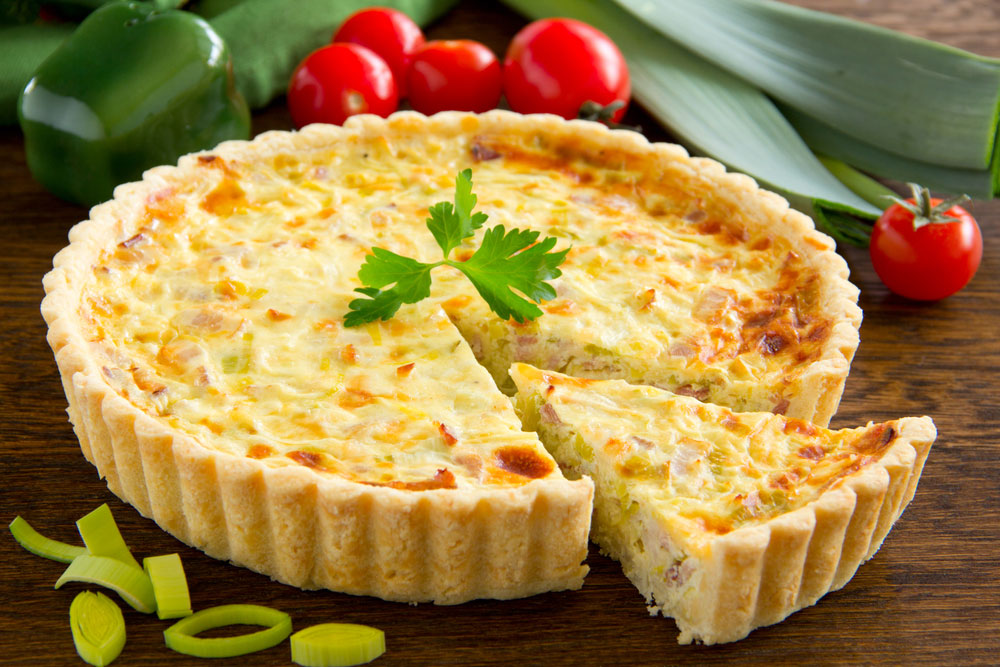
Quiche Lorraine: A Savory Pie
Quiche Lorraine is a savory pie filled with a delectable mixture of eggs, cream, bacon, and cheese. It’s a versatile dish that can be served warm or at room temperature, making it a popular choice for picnics and gatherings.
French Onion Soup: Comfort in a Bowl
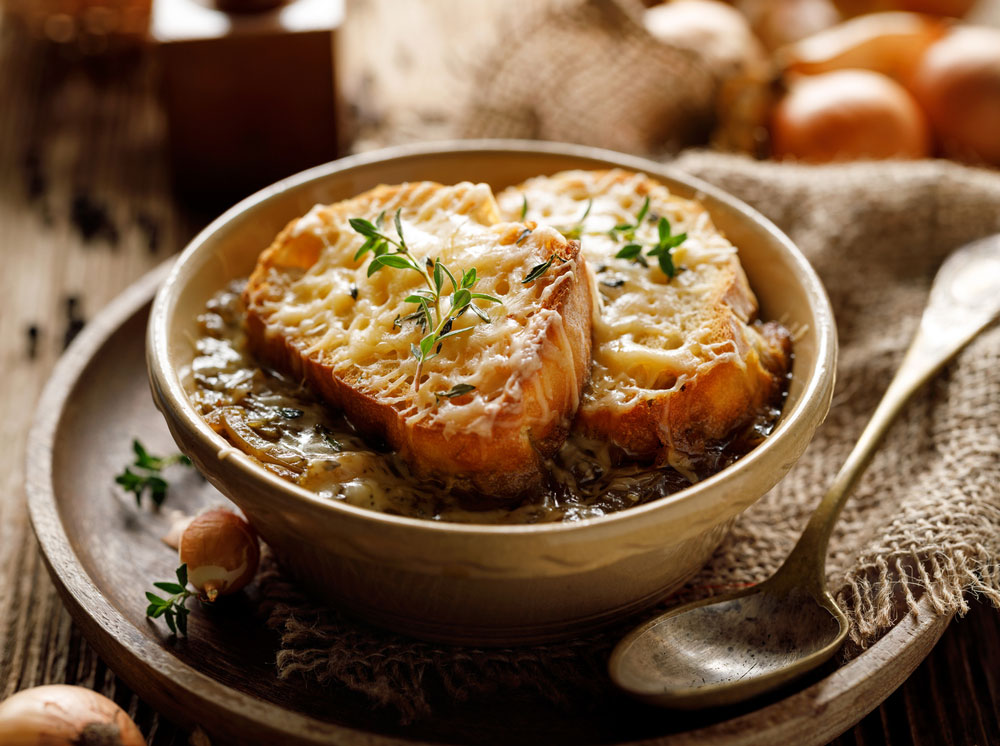
French Onion Soup: Comfort in a Bowl
French onion soup, with its caramelized onions, hearty broth, and melted cheese topping, is the epitome of comfort food. It warms the soul and is often enjoyed as a starter in French restaurants.
These classic French appetizers are just the beginning of a culinary journey that takes you through a diverse range of flavors and textures. French cuisine’s ability to balance tradition and innovation is a testament to its enduring appeal.
In the sections to come, we’ll explore the heart of French cuisine: main courses, the world of cheese and bread, delectable desserts, wine pairings, dining etiquette, and the broader cultural significance of French food.
The Heart of French Cuisine: Main Courses
Coq au Vin: A Rustic Delight
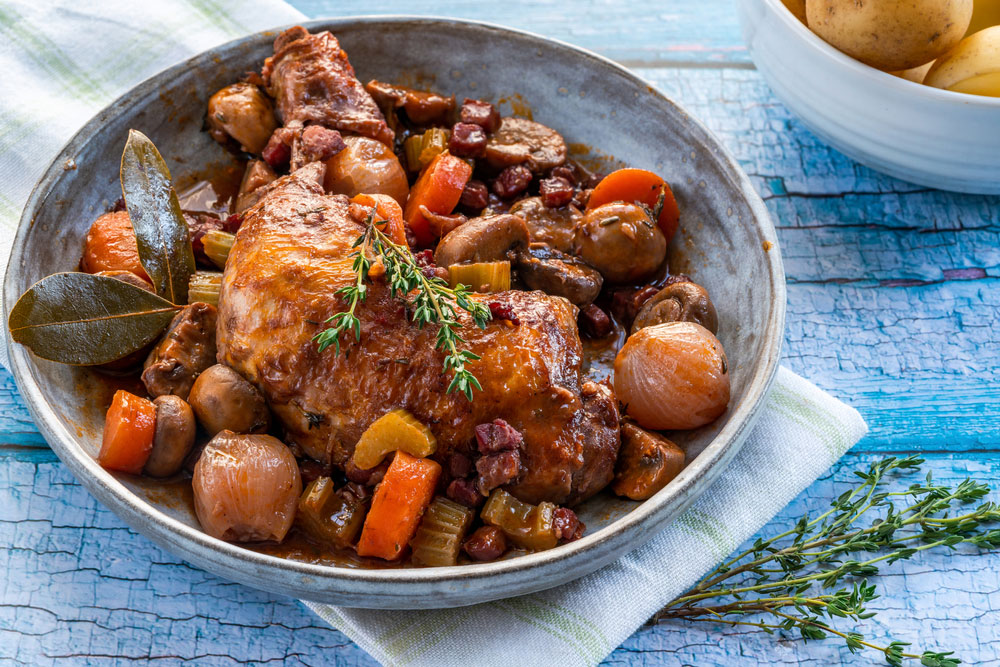
Coq au Vin: A Rustic Delight
Coq au Vin, a classic French dish, features chicken slowly braised in red wine with mushrooms, onions, and bacon. This hearty, flavorful dish showcases the French love for rich, soul-warming flavors. It’s often enjoyed with a side of creamy mashed potatoes or crusty bread to soak up the delicious sauce.
Bouillabaisse: Flavors of the Mediterranean
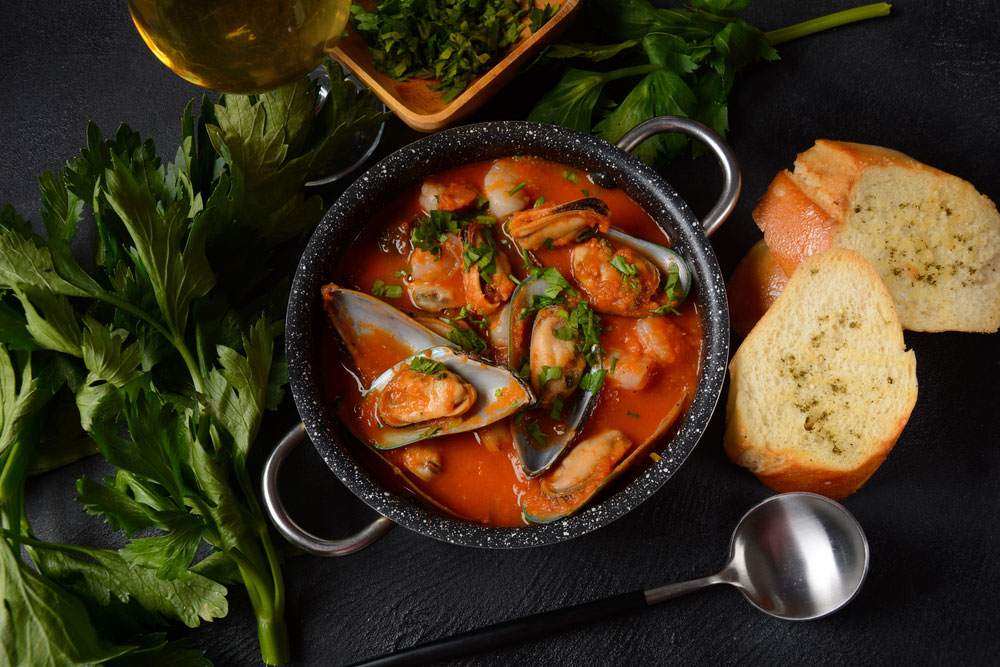
Bouillabaisse: Flavors of the Mediterranean
Hailing from the coastal region of Provence, bouillabaisse is a seafood lover’s dream. This aromatic fish stew combines a variety of seafood such as fish, mussels, and shrimp, simmered with herbs, spices, and saffron. It’s typically served with a side of rouille sauce and crusty bread.
Ratatouille: A Taste of Provence
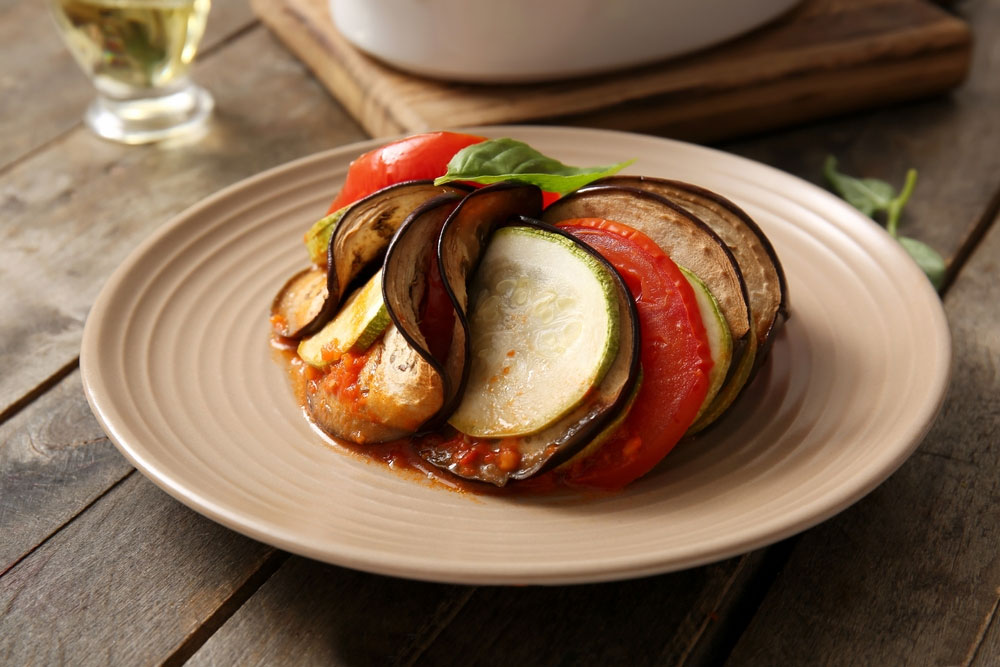
Ratatouille: A Taste of Provence
Ratatouille is a vibrant vegetable medley that captures the essence of Provence. It features tomatoes, eggplants, zucchini, peppers, and herbs, all stewed together until tender. This dish is a celebration of the region’s fresh produce and Mediterranean flavors.
Fromage et Baguette: The Cheese and Bread Tradition
Exploring French Cheese Varieties
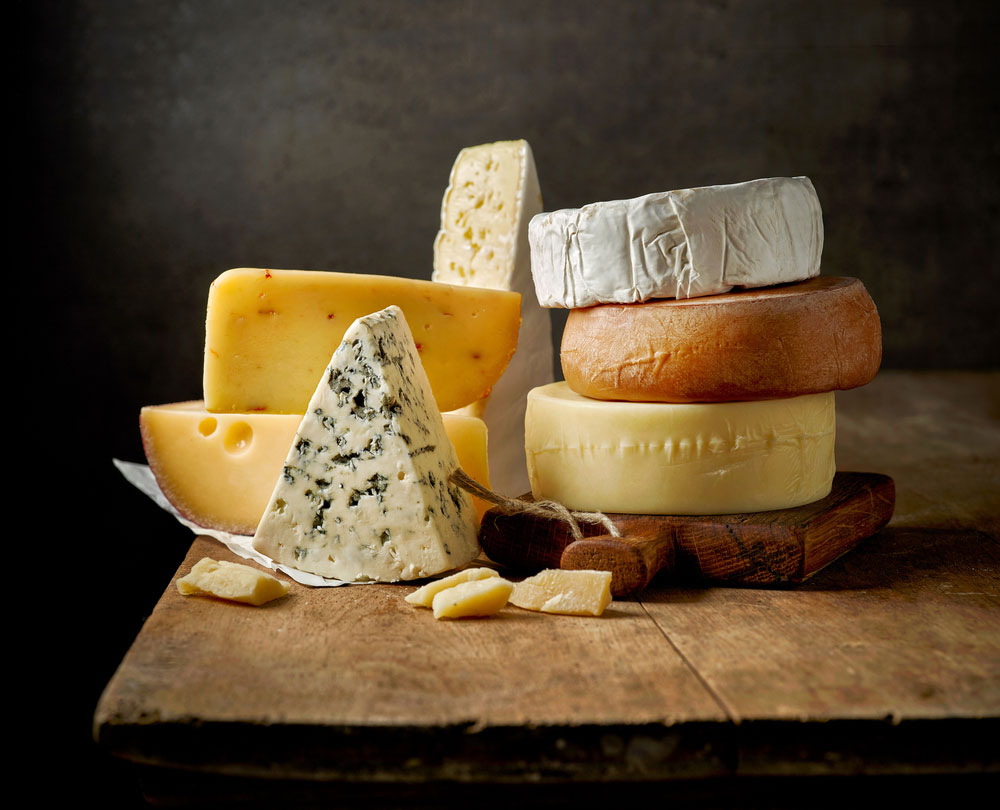
Exploring French Cheese Varieties
France is renowned for its incredible variety of cheeses. From the creamy Brie to the pungent Roquefort, each region produces unique and distinct cheeses. A traditional French meal often includes a cheese course, allowing diners to savor the diversity of flavors and textures.
The Baguette: Iconic French Bread
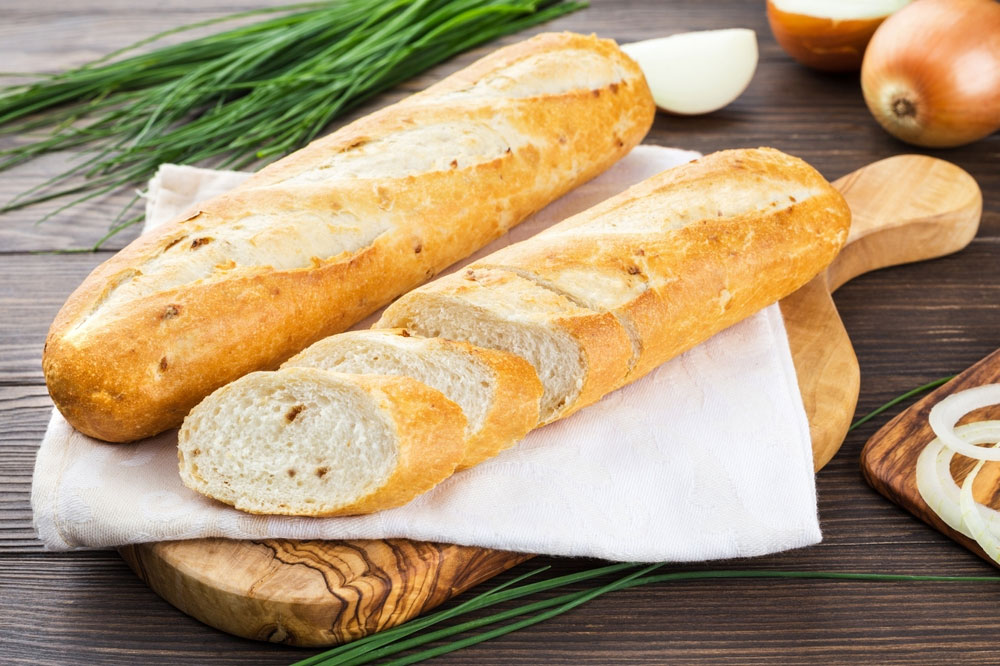
The Baguette: Iconic French Bread
The baguette is more than just bread; it’s a cultural symbol of France. Its crisp crust and airy interior make it the perfect accompaniment to cheese, pâté, or simply enjoyed with a smear of butter. Every town in France boasts its own artisanal bakery, ensuring a constant supply of fresh baguettes.
French Desserts: A Sweet Ending
Crème Brûlée: The Creamy Delight
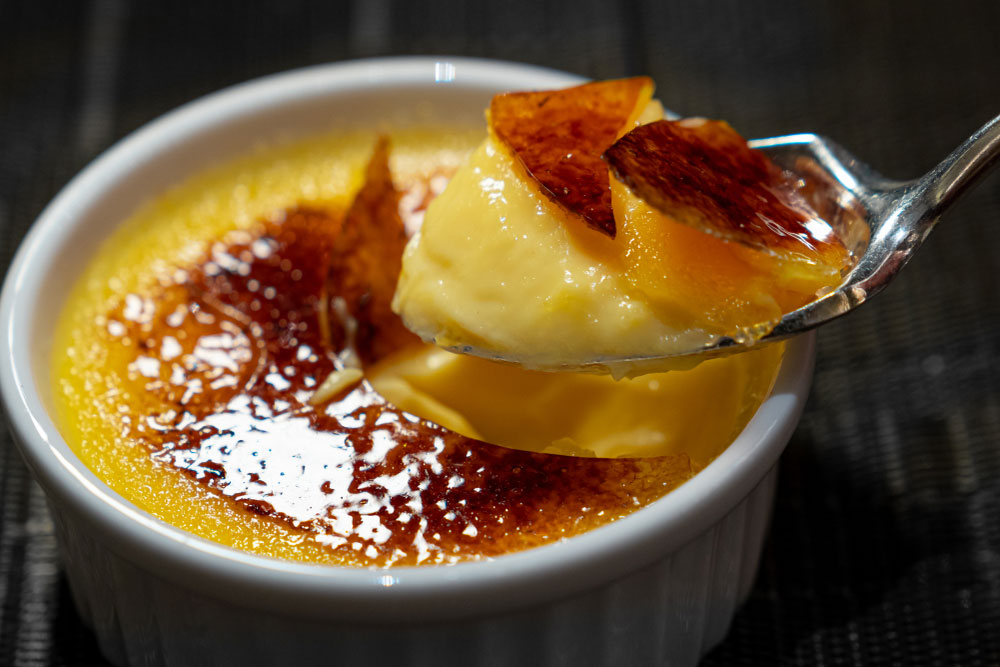
Crème Brûlée: The Creamy Delight
Crème brûlée is a luscious dessert known for its smooth custard base and crisp caramelized sugar topping. The contrast of textures and the delicate flavor of vanilla make it a beloved French dessert.
Tarte Tatin: Caramelized Perfection
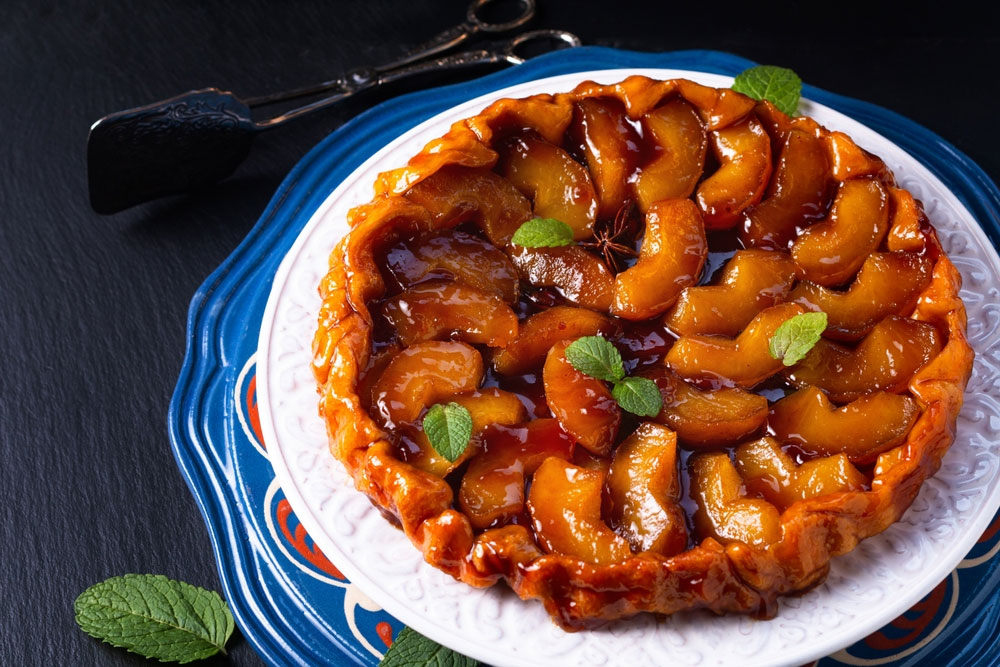
Tarte Tatin: Caramelized Perfection
Tarte Tatin is an upside-down caramelized apple tart that showcases the artistry of French pastry-making. Served warm, the tender apples and sweet caramel create a harmonious and indulgent dessert.
Macarons: Elegant and Colorful

Macarons: Elegant and Colorful
Macarons, not to be confused with macaroons, are delicate almond meringue cookies sandwiched together with flavored fillings. They come in a rainbow of colors and flavors, making them both visually appealing and irresistibly delicious.
French desserts are a testament to the country’s dedication to culinary excellence. Each sweet creation reflects the precision, creativity, and passion that define French pastry artistry.
French Wine: Perfect Pairings
Bordeaux: King of Wines
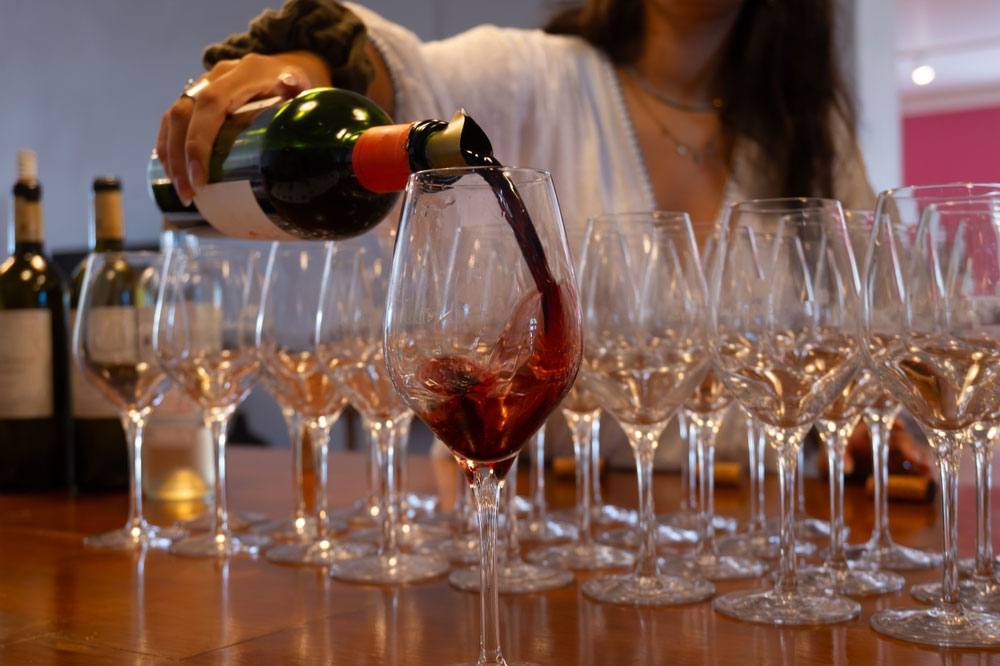
Bordeaux: King of Wines
Bordeaux, often referred to as the “King of Wines,” is a region in southwestern France known for producing some of the world’s most renowned red wines. Bordeaux wines are celebrated for their complexity, with blends that often include Cabernet Sauvignon, Merlot, and Cabernet Franc. These wines pair beautifully with rich dishes like coq au vin and hearty cheeses.
Champagne: Bubbles of Celebration

Champagne: Bubbles of Celebration
Champagne, the sparkling wine from the Champagne region in northeastern France, is synonymous with celebration. Its effervescence and crispness make it the perfect aperitif. Champagne pairs elegantly with seafood, particularly oysters, and adds a touch of luxury to any occasion.
Burgundy: Elegance in a Glass

Burgundy: Elegance in a Glass
Burgundy, or Bourgogne in French, is famous for its elegant and expressive Pinot Noir and Chardonnay wines. These wines are known for their terroir-driven flavors, showcasing the unique characteristics of each vineyard. They pair wonderfully with dishes like coq au vin and delicately prepared fish.
The art of pairing wine with French dishes is a testament to the country’s commitment to culinary harmony. French cuisine often relies on the complementary flavors of wine to enhance the dining experience.
Eating in France: Dining Etiquette and Traditions
The Importance of the Apéritif
Before a French meal, it’s customary to enjoy an apéritif—a light alcoholic beverage designed to stimulate the appetite. Common choices include a glass of Champagne, a Kir (white wine with a splash of blackcurrant liqueur), or a simple pastis. The apéritif is an opportunity to unwind and socialize before the meal begins. Here’s a full guide in PLACES TO VISIT IN THE SOUTH OF FRANCE and see for yourself how to properly plan for your trip.
The Art of Savoring Each Course
French dining is characterized by a leisurely pace. Each course is savored and enjoyed in its own time, allowing diners to appreciate the flavors fully. It’s common to have multiple courses, starting with appetizers and progressing through the main course, cheese, and dessert.
The Cheese Course and Digestif
A French meal often includes a cheese course served before dessert. This course allows diners to explore the country’s rich cheese traditions. Following the meal, a digestif, such as Cognac or Armagnac, may be offered to aid digestion and conclude the dining experience.
French dining etiquette places a strong emphasis on courtesy and manners. Diners are encouraged to use utensils properly, keep their hands on the table (but not their elbows), and engage in polite conversation. Tipping is customary but less extravagant than in some other countries. In Winter see our guide of BEST CITIES IN FRANCE TO VISIT IN WINTER and plan for your trip.
French Food Culture: A Way of Life
Markets and Fresh Produce
French markets are a vibrant hub of activity, offering an array of fresh produce, artisanal cheeses, fragrant herbs, and more. Shopping at these markets is not just a necessity; it’s a cherished cultural experience. Many French towns and cities have weekly markets where locals and tourists alike can indulge in the sensory delights of fresh food.
The Pleasure of Slow Dining
French dining is often described as “slow food.” Meals are meant to be savored, and conversation is as important as the food itself. It’s a time to connect with friends and family, discuss the events of the day, and enjoy the simple pleasure of good company.
Food as a Cultural Expression
In France, food is not merely sustenance; it’s a reflection of culture and identity. Regional specialties, culinary traditions, and seasonal ingredients all play a role in expressing the diversity of French cuisine. Food is a source of pride, and sharing a meal is an opportunity to celebrate French heritage.
Cooking French at Home
Embracing French Culinary Techniques
While French cooking may seem intimidating, mastering a few key techniques can elevate your home cooking. Learning to create a perfect béchamel sauce, properly sear meat, or whip up a silky hollandaise can open up a world of culinary possibilities.
Recipes to Try in Your Kitchen
Exploring French cuisine at home is an exciting culinary adventure. You can start with classics like coq au vin or experiment with delicate pastries like croissants. There are countless recipes available to guide you on your French cooking journey.
Tips for a French-Inspired Meal
When preparing a French-inspired meal at home, pay attention to details. Use high-quality ingredients, embrace simplicity, and focus on presentation. And, of course, don’t forget to pair your meal with a suitable French wine to enhance the flavors.
Whether you’re a seasoned home cook or a novice in the kitchen, trying your hand at French cuisine can be a rewarding and delicious experience.
French Cuisine Around the World
French-Influenced Cuisine Abroad
French culinary techniques and traditions have had a profound influence on international cuisine. French culinary terms and methods are commonly used in kitchens worldwide, and dishes like beef bourguignon and ratatouille have become global favorites.
French Bakeries and Cafés Worldwide
French bakeries and cafés have found their way into many corners of the world. From buttery croissants in New York to macarons in Tokyo, these establishments allow people everywhere to savor a taste of French culinary excellence.
Honoring French Food Traditions
In an increasingly globalized world, preserving culinary traditions is essential. Many chefs and food enthusiasts around the world continue to honor and celebrate the time-honored techniques and flavors of French cuisine.
The enduring influence of French cuisine highlights its universal appeal and enduring relevance in the culinary world.
The Future of French Food
Modern Innovations in French Cuisine
While French cuisine is steeped in tradition, it also embraces innovation. Modern French chefs are known for their creativity, blending traditional techniques with contemporary ingredients and presentation styles. This fusion of old and new ensures that French cuisine remains vibrant and relevant.
Sustainability and French Gastronomy
Sustainability is an increasingly important aspect of French gastronomy. From sourcing locally grown ingredients to reducing food waste, chefs and restaurants are making conscious efforts to minimize their environmental footprint while maintaining the quality of their dishes.
Preserving the Legacy of Traditional French Food
Efforts to protect traditional French food and wine designations, such as AOC (Appellation d’Origine Contrôlée), ensure that the authenticity and quality of iconic products are maintained. This commitment to preserving culinary heritage safeguards the essence of French gastronomy.
French cuisine continues to evolve while staying true to its roots. It remains a source of inspiration for chefs and food enthusiasts worldwide, ensuring that its legacy endures for generations to come.
Conclusion
In conclusion, traditional French food is a culinary treasure, celebrated for its artistry, diversity, and cultural significance. From savory classics to sweet delights, each dish tells a story of tradition and innovation. Whether savoring a meal in a charming bistro or trying your hand at French cooking at home, the rich flavors and time-honored techniques of French cuisine continue to captivate food lovers worldwide. French food is more than sustenance; it’s a celebration of culture, craftsmanship, and the joy of savoring every bite. Bon appétit!
People Also Ask :
What are 10 famous French foods?
Croissants Baguettes Escargot (snails) Coq au Vin (chicken in wine) Ratatouille Crème Brûlée Quiche Lorraine Foie Gras Bouillabaisse (fish stew) Macarons
What is French national food?
The baguette is often considered a symbol of French cuisine but doesn't represent the national food.
What is popular in French cuisine?
French cuisine is known for its use of butter, cream, cheese, and wine in dishes like coq au vin, boeuf bourguignon, and escargot.
What is a typical meal in French?
A typical French meal consists of multiple courses, including appetizers (entrées), main courses, cheese, and dessert.
Plan your trip with ontravelx and get ready for a journey full of breathtaking sights and priceless memories.
Kindly visit:
- Official Website of France
- Explore the official website of France to learn more about the country’s culture, tourism, and government.
- France on Wikipedia
- Wikipedia’s page on France provides in-depth information about the country’s history, geography, and more.
- Visit Paris
- Discover the official tourism website of Paris, the capital city of France, and plan your trip to the City of Light.
- Louvre Museum
- Explore the world-famous Louvre Museum’s official website to learn about its collections, exhibitions, and history.


